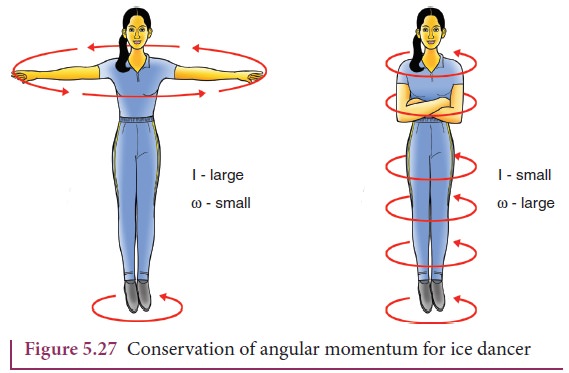
The Law of Conservation of Angular Momentum
An introduction to The Law of Conservation of Angular Momentum
Name: Own Teacher
Email: info@ownteacher.com
Created At: 28-10-2023
The Law of Conservation of Angular Momentum is a fundamental principle in physics that states that the total angular momentum of an isolated system remains constant over time, provided that no external torques act on the system. Angular momentum is a crucial concept in rotational motion and has properties similar to linear momentum. Here's a more detailed explanation:
Angular Momentum: Angular momentum (L) is a vector quantity that describes the rotational motion of an object. It is the product of an object's moment of inertia (I) and its angular velocity (ω), expressed as:
L = Iω
The direction of angular momentum is perpendicular to the plane of rotation and follows the right-hand rule.
Conservation Law: The Law of Conservation of Angular Momentum is a conservation law, similar to the conservation of linear momentum. It states that within an isolated system, the total angular momentum remains constant if no external torques are applied. In mathematical terms, this is represented as: ΣL_initial = ΣL_final
Here, ΣL_initial is the total initial angular momentum of all objects in the system, and ΣL_final is the total final angular momentum after the interaction or change in rotational motion.
Isolated System: An isolated system is one that doesn't exchange matter or energy with its surroundings. In the context of angular momentum conservation, this means that the system is not influenced by any external torques or forces.
Application of the Law: The law of conservation of angular momentum is commonly applied to understand and explain various phenomena in physics and astronomy. For instance, it plays a significant role in explaining the behavior of celestial bodies, such as planets and stars. It's particularly useful in understanding the motion of planets in their orbits and the conservation of angular momentum in celestial systems.
Real-World Examples: This law has practical applications in areas like astronomy, where it explains why planets move in stable orbits around the sun. It also has engineering applications, such as in designing flywheels for energy storage, as they utilize the principles of angular momentum conservation to store and release energy efficiently.
In summary, the Law of Conservation of Angular Momentum is a fundamental principle that states that the total angular momentum of an isolated system remains constant in the absence of external torques. This principle is essential for understanding rotational motion and has far-reaching applications in both classical mechanics and astrophysics.
Comment List
Leave a Comment.



